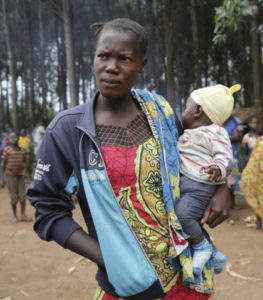Global number of displaced persons tops 80 million
The number of forcibly displaced people worldwide reached a record 80 million by the middle of this year, according to a new report from the UN refugee agency UNHCR.
The report says the total number of people displaced by conflicts and persecution, including those who were internally displaced, is likely to have exceeded the 80 million mark for the first time.
 The largest number of displaced people were from Syria, where a civil war continues, followed by people fleeing their homes in Venezuela, Afghanistan and South Sudan.
The largest number of displaced people were from Syria, where a civil war continues, followed by people fleeing their homes in Venezuela, Afghanistan and South Sudan.
The report says temporary border closures and entry restrictions imposed amid the COVID-19 pandemic has made it harder for refugees to reach safety. Some countries partly or fully closed their borders, and 90 of them did not make exceptions for asylum seekers.
The UNHCR report warns that many displaced people are stranded elsewhere and forced to live in harsh conditions and it has called on the international community to provide aid to those people despite the ongoing pandemic.
While a full the report for 2020 is yet to be established, the UNHCR’s Mid Term Trends report says that at the beginning of this year, some 79.5 million people had been forced from their homes due to persecution, conflict, and human rights violations.
This total included 45.7 million internally displaced people (IDPs), 29.6 million refugees and others forcibly displaced outside their country, and 4.2 million asylum seekers. Existing and new conflicts and the novel coronavirus have dramatically affected their lives in 2020.
Despite the UN Secretary-General’s urgent appeal in March for a global ceasefire while the world fights the pandemic, conflicts and persecution continued. Violence in Syria, the Democratic Republic of the Congo, Mozambique, Somalia, and Yemen drove new displacements in the first half of 2020.
Significant new displacement has also been registered across Africa’s Central Sahel region as civilians are subjected to brutal violence, including rape and executions.
“With forced displacement doubling in the last decade, the international community is failing to safeguard peace,” said Filippo Grandi, UN High Commissioner for Refugees.
“We are now surpassing another bleak milestone that will continue to grow unless world leaders stop wars.”
The report says that for people forced to flee, COVID-19 became an additional protection and livelihoods crisis on top of the global public health emergency. The virus has disrupted every aspect of human life and severely worsened existing challenges for the forcibly displaced and stateless.
Some of the measures to curb the spread of COVID-19 made it harder for refugees to reach safety.
At the peak of the first wave of the pandemic in April, 168 countries fully or partially closed their borders, with 90 countries making no exception for people seeking asylum. Since then, and with UNHCR’s support and expertise, 111 countries have found pragmatic solutions to ensure their asylum system is fully or partially operational while ensuring necessary measures are taken to curb the spread of the virus.
“Despite such measures, new asylum applications dropped by a third compared to the same period in 2019. Meanwhile, the underlying factors leading to conflicts globally remain unaddressed,” the report says.
“Fewer durable solutions were found for the displaced in 2020 compared to the same period in previous years. Just 822,600 displaced people returned home, most – 635,000 – were IDPs. With 102,600 voluntary repatriations in the first half of the year, refugee returns dropped by 22 per cent compared to 2019,” it says.
“Resettlement travel for refugees was on temporary hold due to the COVID-19 restrictions from March to June. Consequently, only 17,400 refugees were resettled in the first six months of 2020 according to government statistics, half the figure of 2019.
“Although the actual number of stateless people remains unknown, 79 countries in the world have reported 4.2 million stateless people on their territory,” the report says.
See the Mid-Year Trends report here.
Global displacement statistics can be seen https://www.unhcr.org/refugee-statistics/.












